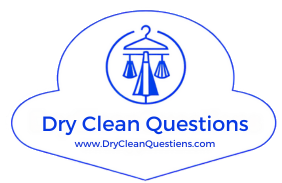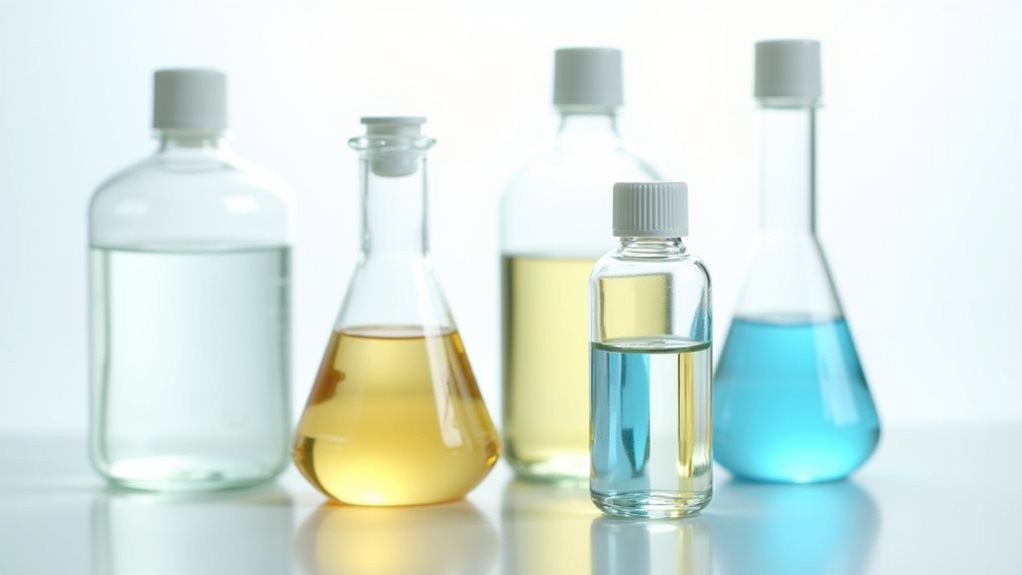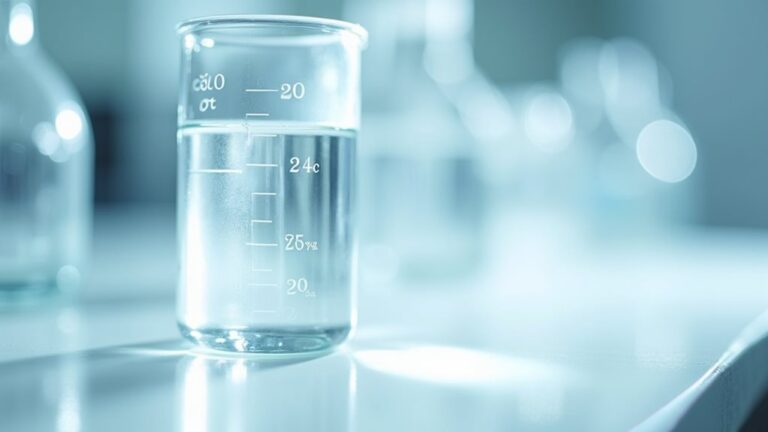You’ll find six main dry cleaning solvents at your local cleaner, each with unique trade-offs that’ll affect both your clothes and health. PERC dominates with 60-65% market share but carries cancer risks, while synthetic petroleum gets marketed as “green” despite similar VOC concerns. Siloxane offers the gentlest option, breaking down into harmless compounds, and liquid CO2 uses high-pressure technology for residue-free cleaning. Hydrocarbon solvents and water-based wet cleaning round out your options, and understanding these differences will help you make smarter choices for your wardrobe.
Perchloroethylene (PERC): The Industry Standard
Perchloroethylene, or Perc as we’ll call it from here on out, has dominated the dry cleaning world for nearly a century, and honestly, it’s both impressive and concerning how one chemical can hold such a grip on an entire industry.
Since the 1930s, this dry cleaning solvent has maintained roughly 60-65% market share because it’s incredibly effective at removing stubborn stains, though here’s the kicker – it’s also classified as a potential human carcinogen.
Despite nearly a century of reliable stain removal, this industry-dominating solvent carries the troubling distinction of being a potential carcinogen.
The Environmental Protection Agency isn’t thrilled about chronic exposure risks, which include respiratory issues and cognitive problems, so they’re pushing the dry cleaning industry toward safer alternatives.
While solvent recovery systems help reduce waste, the health risks have prompted phase-outs in states like California.
This chlorinated hydrocarbon excels at dissolving oils and grease that water-based cleaning methods simply cannot tackle, making it particularly valuable for treating delicate fabrics like silk and wool.
Synthetic Petroleum: A Popular Alternative
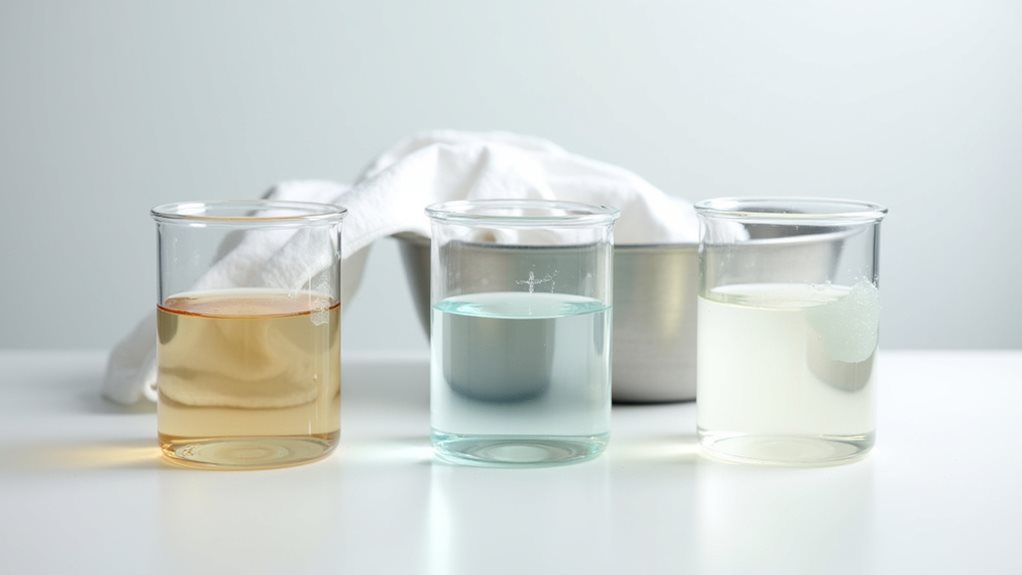
You’ve probably noticed dry cleaners advertising “organic” or “green” synthetic petroleum solvents, and while I appreciate their marketing efforts (truly, I do 😊), these claims can be misleading since this petroleum-based alternative still contains volatile organic compounds that contribute to air pollution.
Despite being marketed as environmentally friendly, synthetic petroleum poses similar health risks to traditional solvents, releasing VOCs that can irritate your respiratory system and contribute to ground-level ozone formation.
I learned this the hard way when I assumed “organic” meant safer, only to discover that synthetic petroleum, while different from PERC, doesn’t eliminate the environmental concerns I was hoping to avoid.
However, synthetic petroleum solvents do share the same fundamental cleaning principle as other dry cleaning chemicals – they effectively dissolve oils and grease that water-based washing simply cannot remove.
Environmental Marketing Claims
Nearly 20% of dry cleaners across America have adopted synthetic petroleum as their go-to solvent, and honestly, I can’t blame them for making the switch—the marketing around this gasoline byproduct makes it sound like the holy grail of eco-friendly cleaning 🌿.
You’ll see terms like “organic” and “green alternative” plastered everywhere, but here’s the thing that gets me: synthetic petroleum is still a volatile organic compound that contributes to ozone formation, just like perchloroethylene.
The environmental impact isn’t dramatically different, and the health and environmental concerns remain similar despite clever marketing.
While cleaning performance is solid, don’t let the fancy labeling fool you—regulations treat these alternative solvents seriously for good reason.
For consumers concerned about chemical exposure, hydrocarbon solvents like synthetic petroleum still require the same precautions as traditional dry cleaning chemicals, including allowing freshly cleaned items to air out before wearing.
VOC Health Risks
Behind all that slick marketing lies a more troubling reality that I wish more people understood—synthetic petroleum solvents release volatile organic compounds that can severely mess with your health, and the effects aren’t something you want to brush off.
Here’s what really bothers me about these dry cleaning solvents masquerading as safer alternatives to PERC:
- Respiratory issues develop when you’re constantly exposed to these VOC emissions, especially if you work in facilities with poor ventilation systems.
- Indoor air quality deteriorates considerably, creating environments that can trigger asthma and other breathing problems.
- Environmental contamination occurs despite marketing claims, since these volatile organic compounds still contribute to ozone formation.
- Health risks remain largely unstudied, meaning we’re fundamentally guinea pigs for potential carcinogenic effects.
The uncertainty alone should make you think twice. To minimize exposure risks, allow freshly cleaned garments to air out properly before wearing them, especially items that will be worn close to your skin.
Siloxane: The Gentle Option
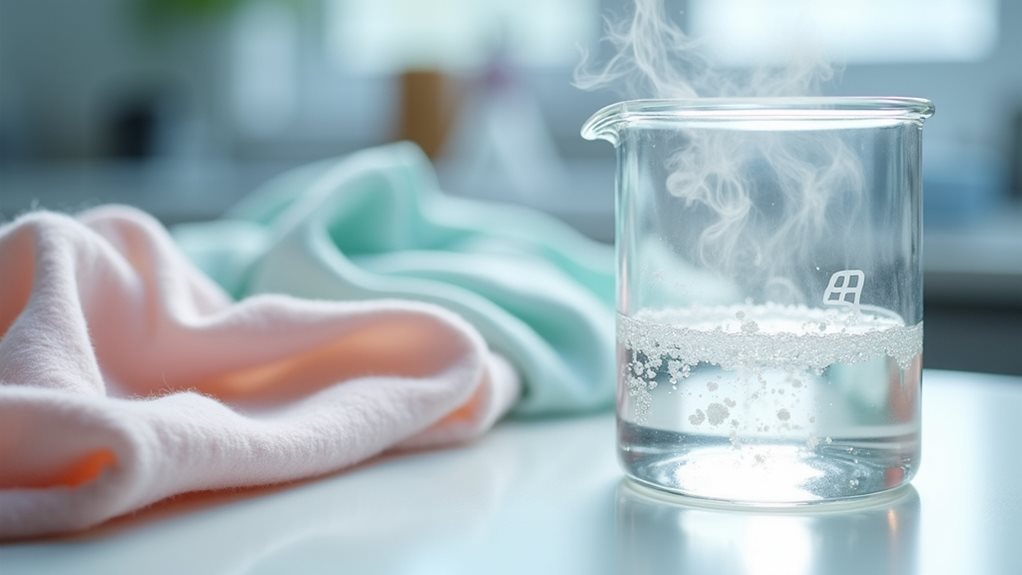
While most people have never heard of siloxane, this remarkable solvent represents what I’d call the “whisper approach” to dry cleaning – it gets the job done without making a fuss, much like that friend who quietly helps you move apartments without expecting pizza in return.
This biodegradable cleaning fluid is incredibly gentle on fabrics, protecting your delicate pieces from damage while eliminating harmful substances from the equation. Unlike traditional solvents that can make you hold your breath, siloxane poses minimal risk to your health and skin.
Companies like RAVE FabriCARE have adopted this environmentally friendly alternative, though fewer than 5% of cleaners currently use it.
When siloxane breaks down, it becomes harmless silica and carbon dioxide – nature’s way of saying “thanks for caring.” 🌱
As a silicone-based solvent, it maintains the chemical stability and fabric-safe properties that professional cleaners require while offering a more sustainable approach to garment care.
Liquid Carbon Dioxide: High-Tech Cleaning
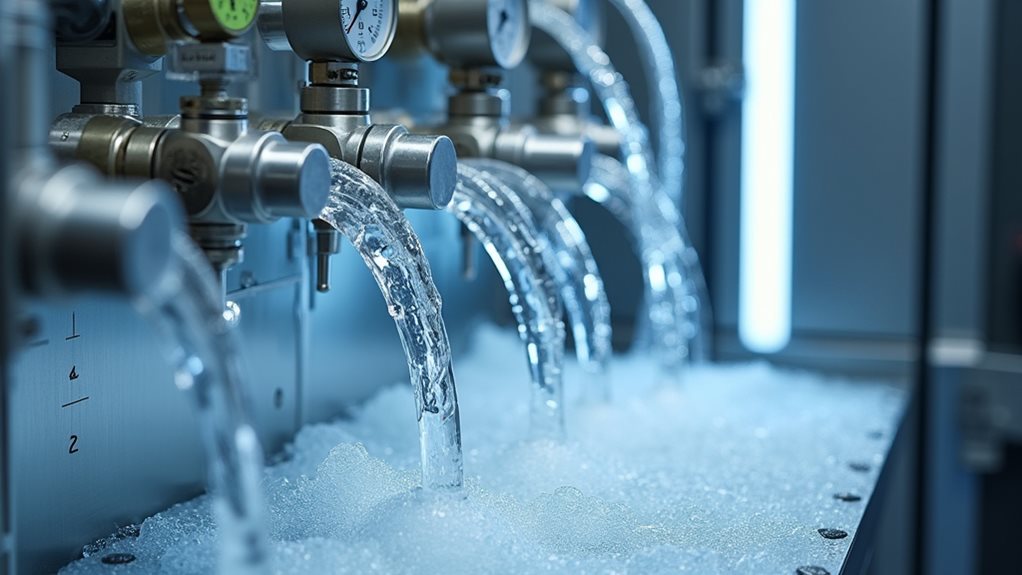
You’ve probably never thought about cleaning your clothes with the same stuff that makes soda fizzy, but liquid carbon dioxide represents the cutting-edge of dry cleaning technology, using intense pressure to transform CO2 into a powerful, residue-free cleaning agent.
While this high-tech process might sound like something from a sci-fi movie, it’s actually quite real, though you’ll face some serious environmental trade-offs that’ll make you question whether “cleaner” technology is always better for our planet.
The pressure-based system works brilliantly for basic cleaning, but don’t expect miracles on that stubborn wine stain from last week’s dinner party – sometimes old-school solvents still reign supreme! 😅
Unlike traditional perchloroethylene solvents that can leave chemical residues, liquid CO2 cleaning leaves no harmful traces on your garments after the process is complete.
High-Pressure Cleaning Process
Although it sounds like something straight out of a sci-fi movie, liquid carbon dioxide cleaning represents one of the most fascinating advances in garment care, transforming ordinary CO2 gas into a powerful, high-pressure liquid solvent that gently lifts stains from your favorite clothes.
This innovative cleaning process works through four key steps:
- Pressurization – CO2 gas transforms into liquid under high pressure
- Fiber swelling – Low temperatures cause fabric fibers to expand, releasing trapped stains
- Solvent action – Liquid carbon dioxide extracts dirt without leaving residue
- Evaporation – CO2 returns to gas form, leaving garments completely clean
While this eco-friendliness sounds perfect, each cycle releases 6-10 pounds of greenhouse gas emissions.
Unfortunately, high costs and limited stain removal effectiveness have prevented widespread adoption, though it minimizes fabric damage beautifully. Despite these environmental alternatives gaining traction, perchloroethylene remains the dominant solvent in most dry cleaning establishments due to its superior cleaning efficacy and the industry’s established infrastructure.
Environmental Impact Concerns
Despite the marketing buzz surrounding liquid CO2 cleaning as an eco-friendly miracle, the reality presents a more complicated environmental picture that might surprise you.
While dry cleaners use PERC (a volatile organic compound that’s carcinogenic to humans), liquid carbon dioxide seems healthier—but here’s the twist I learned researching this.
Each cleaning cycle releases 6-10 pounds of CO2 directly into our atmosphere, creating legitimate global warming concerns that contradict its green image.
The high acquisition cost limits widespread adoption, ironically making traditional health and environmental hazards more accessible than this supposedly better option 😅.
Though it eliminates toxic residues, the sustainability question remains murky when you’re literally pumping greenhouse gases with every load of laundry.
Many facilities are now exploring hydrocarbon-based cleaners as a middle ground between the health risks of traditional solvents and the atmospheric concerns of CO2 systems.
Hydrocarbon Solvents: Traditional Choices

Most dry cleaners today rely on hydrocarbon solvents as their go-to alternative to the increasingly controversial PERC, and honestly, it’s easy to see why these traditional choices have maintained their staying power in an industry that’s constantly evolving.
You’ll encounter two main types when exploring the dry cleaning process:
- Aliphatic hydrocarbons like Stoddard solvent – these clear, yellowish-green liquids evaporate quickly, leaving fabrics feeling surprisingly dry.
- Aromatic hydrocarbons including PERC – recognizable by their distinctly sweet scent.
- Hydrocarbon mixtures – offering balanced cleaning power while reducing skin irritation compared to single solvents.
- Environmental concerns – despite being “safer,” these volatile organic compounds (VOCs) still contribute to ozone formation.
While they’re gentler than harsh alternatives, these solvents aren’t perfect solutions, creating respiratory issues and environmental concerns that conscientious consumers should consider. These petroleum-derived solvents work by breaking down soil and stains through chemical dissolution rather than water-based washing methods.
Water-Based Wet Cleaning: The Original Method
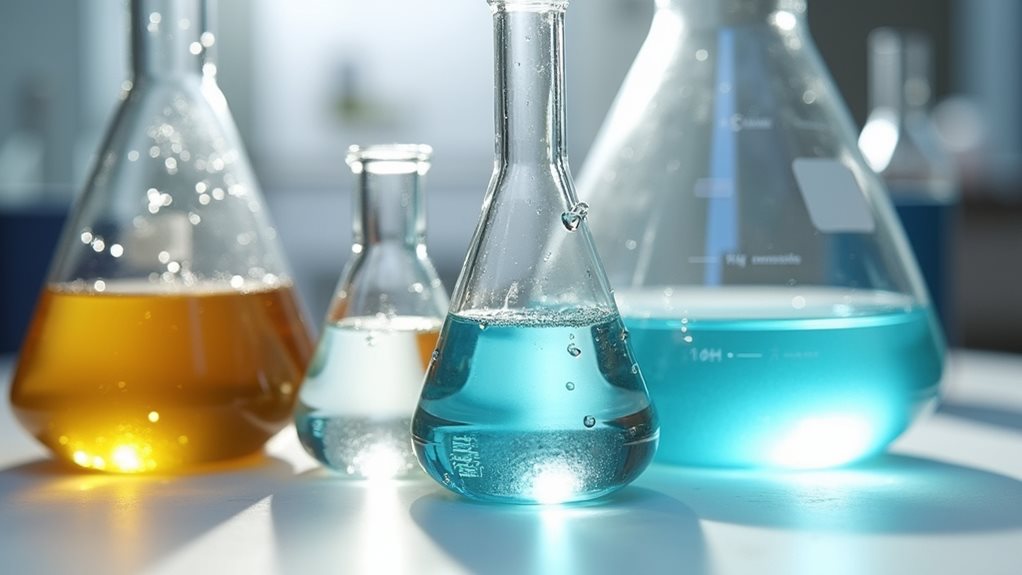
Before synthetic solvents revolutionized the industry, water was doing the heavy lifting in textile care for thousands of years, and frankly, it’s making quite the comeback as environmentally conscious consumers rediscover this time-tested approach.
You’ll find that water-based wet cleaning offers superior cleaning power against both everyday grime and stubborn oil-based stains, while being remarkably gentle on delicate fabrics that might suffer under harsher treatments.
Unlike traditional dry cleaning methods that rely on volatile organic compounds (VOCs), this environmentally friendly process uses biodegradable detergents and specialized equipment that controls temperature and mechanical action with precision.
Modern wet cleaning harnesses biodegradable detergents and precision-controlled equipment, eliminating harmful VOCs while delivering exceptional fabric care results.
Professional wet cleaning techniques employ specialized detergents and advanced equipment to achieve results that rival traditional chemical-based methods while maintaining environmental safety standards.
It’s honestly invigorating to see an old-school method outperform newer alternatives while keeping both your clothes and the planet happy!
